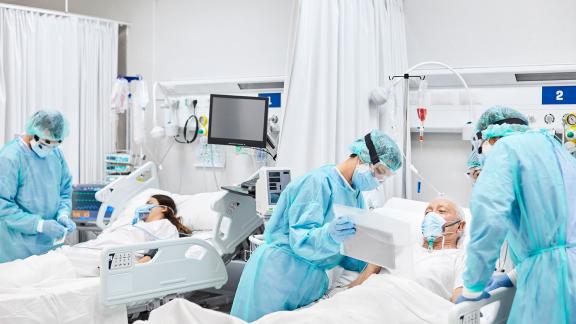Explained: European Reference Networks

European Reference Networks (ERNs) are clinical networks bringing together healthcare providers across Europe to tackle complex or rare medical conditions that require highly specialised treatment and a concentration of knowledge and resources.
European Reference Networks (ERNs) are clinical networks bringing together healthcare providers across Europe to tackle complex or rare medical conditions that require highly specialised treatment and a concentration of knowledge and resources.
Between 6 000 and 8 000 rare diseases affect an estimated 30 million people in the EU and fequently a lack of specialist knowledge for specific rare diseases means patients can miss out on diagnosis and treatment options in their own country.
By consolidating knowledge and expertise scattered across countries, ERNs give healthcare providers access to a much larger pool of expertise. This will result in better chances for patients to receive an accurate diagnosis and advice on the best treatment for their specific condition.
It is expected that ERNs will lead to improvements in service delivery, working systems, patient pathways, clinical tools, and the earlier adoption of scientific evidence. They will also act as focal points for medical training and clinical research.
This short video from the European Commission explains how ERNs will lead to improvements in diagnosis and treatment for rare disease patients.
How will they operate?
To review a patient's diagnosis and treatment, healthcare providers/members of an ERN will consult, exchange information and share knowledge with other members of the network. A dedicated IT platform and telemedicine tools will be used for this purpose. ERNs are not directly accessible to individual patients. However, with the patient's consent, and in accordance with the rules of their national health system, a patient's case can be referred to the relevant ERN member in their country by their healthcare provider.
ERNs works as an accreditation system, with participating healthcare providers being awarded a protected logo which certifies them as centres of clinical excellence in a particular clinical domain. To achieve this status, providers will have documented their competence, experience and level of activity, as well as demonstrated evidence of good clinical care and outcomes through a rigorous assessment process.
What medical areas will be covered?
24 ERNs were formally launched by the European Commission on 9 March 2017. Overall they involve more than 900 medical teams in 300 hospitals, and covering a range of clinical areas including bone disorders, childhood cancer and immunodeficiency. See here for the full list of rare and complex diseases covered.
ERNs and the NHS
The NHS European Office has been involved in the ERN initiative from the beginning of the process, communicating the opportunities stemming from membership of ERNs to the NHS and encouraging and supporting individual NHS trusts and hospitals to get involved.
Six of the 24 ERNs are led by the NHS, with some 40 NHS hospitals involved across the various networks. Leading NHS specialist care providers can now collaborate and rapidly share the most cutting-edge knowledge on rare diseases with their counterparts across the EU.
Although no direct EU funding is attached to being a member of an ERN, the profile and status of the NHS hospitals involved will be considerable across Europe and will put the Networks and their individual members in a good position to bid for EU research funding going forward.
Find out more
This brochure from the European Commission provides information on the role of ERNs and details of the 24 networks, while videos and presentations from the 09 March 2017 launch day can be viewed here.
A toolkit is also available which includes details of the EU hospitals involved in the ERNs.



